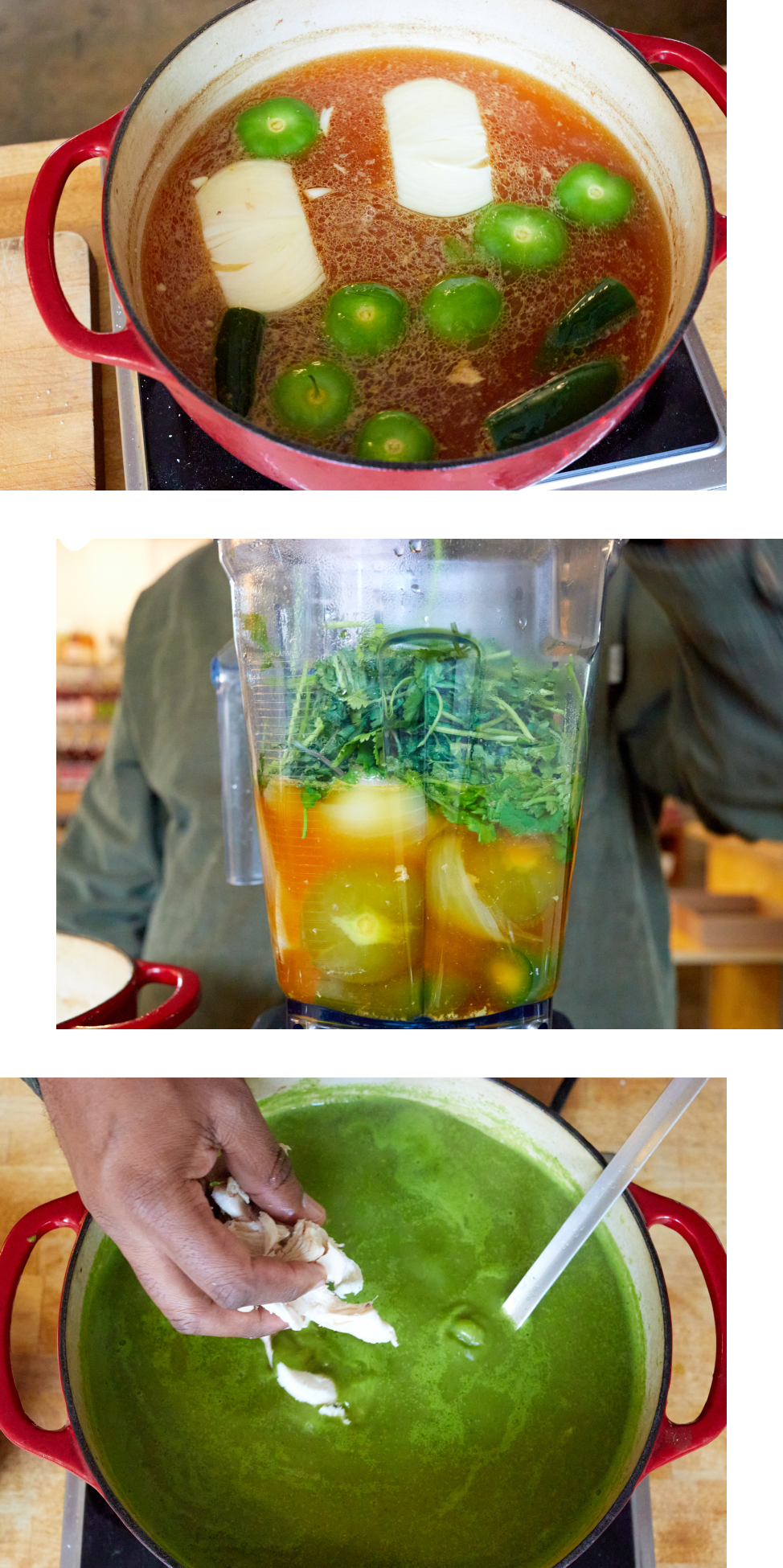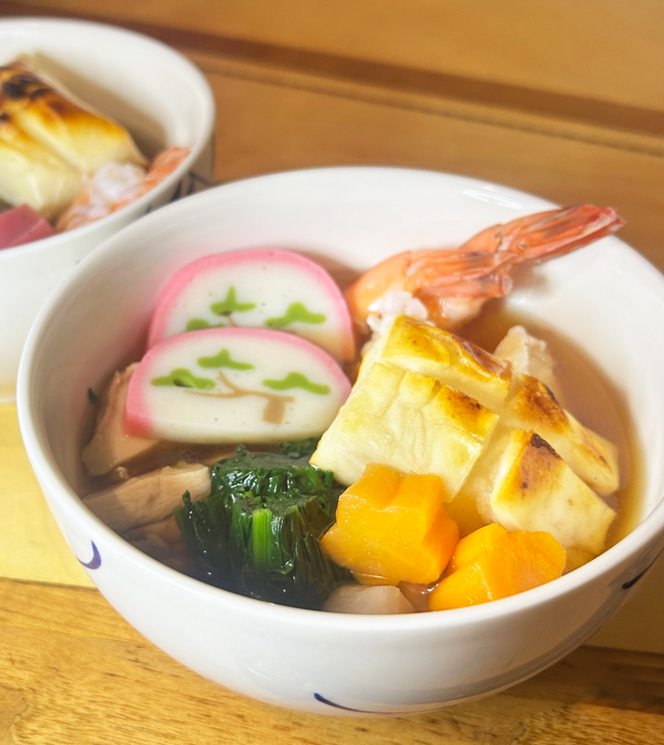
Chicken Pozole with Nixtamalized Hominy

Learning a new tool or trick in the kitchen is one of the most exhilarating feelings to me.
A personal accomplishment that hits on a few different levels, something that is nourishing to the mind and to the body. Something we can be proud of, something we can pass on to the ones we love and care about.
That's the whole experience I get with cooking in general and with this recipe specifically. Patience is a virtue that many of us forget when it comes to cooking and shit, I’m guilty of it myself. There are so many things pulling our attention in so many different directions: work, school, children and even our own mental health can hold us back. Of course what’s important differs from person to person but if you find yourself reading this recipe I'm gonna make the assumption that cooking is on the list of what's important to you. And I wanna thank you for reading! Because it means a lot.
This “new tool” I'm talking about is the process of Nixtamalization. It’s a traditional technique that’s been used for centuries in Mexico and Central America, so it’s not new-new, but it is new to me. Dried corn kernels (maize) are mixed with water and sodium hydroxide (aka lye, but we’re talking food grade lye here people!) and heated, creating an alkaline solution that changes the chemical structure of the maize to make it digestible. It’s one of the first steps in the process of making Masa, which gets us to tortillas. During this chemical reaction the smell also starts to take on that familiar smell you get with fresh tortillas: a delightful sweet popcorn smell.

This is also how we get to Hominy: after the Nixtamalization process, instead of washing and milling the maize into masa, it is cooked in whole kernel form until it softens a bit, while still maintaining a nice bite. Hominy is usually served in a soup called Pozole which comes in many different styles. There’s Pozloe Rojo, which typically comprises stewed pork shoulder or shank braised in a broth of red chilis. This version has a lot of depth and spiciness that pairs well with the fatty unctuousness of pork. There’s also Pozole Blanco, a clean, clear chicken broth with hominy and picked chicken. Finally, there is Pozole Verde (which is what my recipe is woot!): jalapeno, tomatillo, garlic and onion are cooked in chicken stock until they are soft, then pureed with cilantro before being added back into the broth with hominy and shredded chicken. This version is bright and acidic from the tomatillo with underlying heat from the jalapeno and earthiness from the cilantro.
~ Rome Bruno

Rome Bruno
A life-long food lover, Rome Bruno has turned his passion into a career as a chef, writer, recipe developer and video host. He’s spent time in kitchens on both coasts and written for some of the country's biggest publications, and we’re thrilled to welcome him to the extended Wellspent Family.
What You'll Need
Ingredients
- 1/2 pound of dried white maize
- 1 teaspoon of lye (food grade)
- 1 pound of tomatillos
- 3 whole jalapeños
- 4 garlic cloves
- 1 large white onion
- 1 large bunch cilantro
- 2 tablespoons of sazón*
- 3-4 cups of chicken meat, cooked and picked
- 4 - 5 cups of chicken broth
- To taste Italian fine sea salt
- For serving lime wedges
- For serving cilantro, picked
- For serving cotjia cheese
- For serving sliced cabbage
- *Sazón is a spice blend typically made with cumin, turmeric, garlic powder, onion powder, black pepper, and paprika. It's easy to make your own, but store-bought versions are readily available
Equipment
- sauce pan
- gloves
- colander or strainer
- large pot or dutch oven
- stand blender or hand blender
- measuring spoons
- measuring cups
What you'll have to do
Step 1 — To a saucepan add the dried maize, 1 teaspoon lye and enough water to cover. Mix well until the lye is completely incorporated. Set on the stove and bring to a simmer. Let simmer for 30 minutes, checking frequently; if the water starts to reduce at any time add more to keep it covered. Once done, set in a heat proof container and let sit out overnight.
Step 2 — The next morning (with gloves) drain the lime/water solution from the corn, rinse vigorously under cold water. This is a very important step: you want to make sure you wash off all the lye completely. Think of the washing process as if you were washing rice and then some: agitating it, pouring water out once full, and starting again until water runs clear. You should do this about 20 times.
Step 3 — Place the thoroughly rinsed corn into a pot with enough water to cover, bring to a simmer and let cook for about 2 hours until soft and chewy but not chalky. Let cool, and store in its cooking liquid until ready to use.
Step 4 — In a large pot or dutch oven add 4-5 cups chicken stock, tomatillos, onion, jalapeno and garlic cloves and bring to a simmer. Let cook for about 20 minutes or until all the veggies are soft.
Step 5 — To a blender, add all the veggies and 2 tablespoons sazón with enough broth to help blend it, buzzing until completely smooth. Add this back to the pot of broth, add the cooked hominy (with none of its cooking liquid) and chicken. Cook for an additional 10 minutes or until everything is heated through and season to taste. Serve with your choice of toppings.
Recipe courtesy of Romel Bruno

More recipes

Kana's Ozoni Soup
Fulamingo founder Kana Hinori Hanson shares her family recipe for Ozoni, a vegetable and miso soup traditionally eaten to celebrate the new year.

Hominy with Beans & Squash | Wellspent Market
Corn, beans, and squash, the three sisters of Mesoamerican food provide some tasty history.
